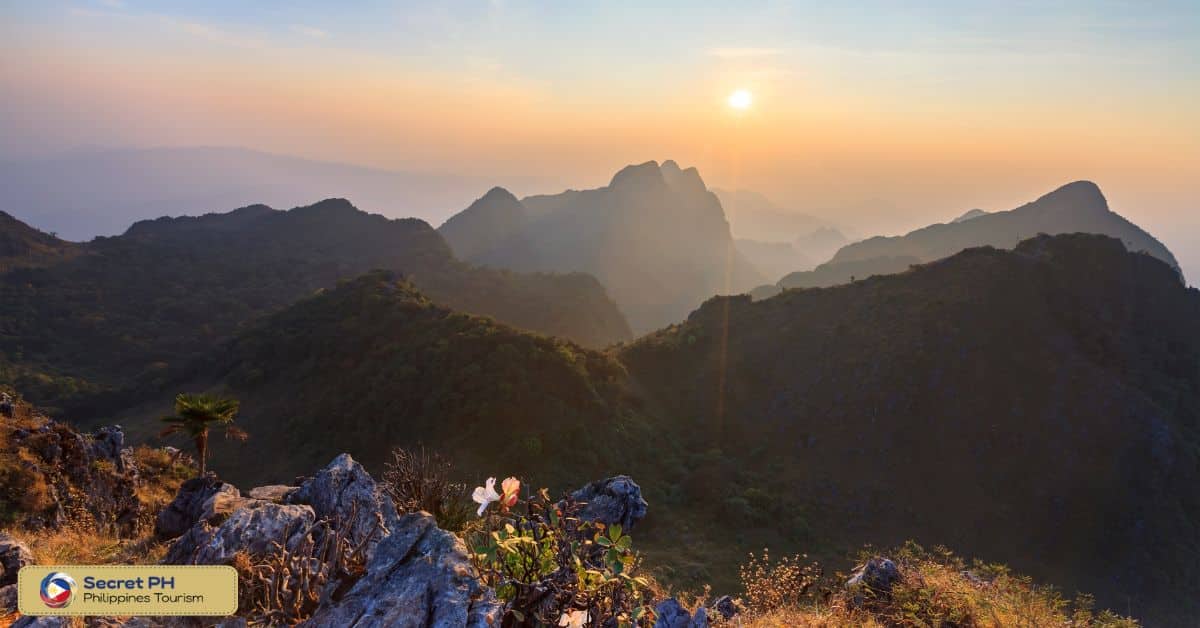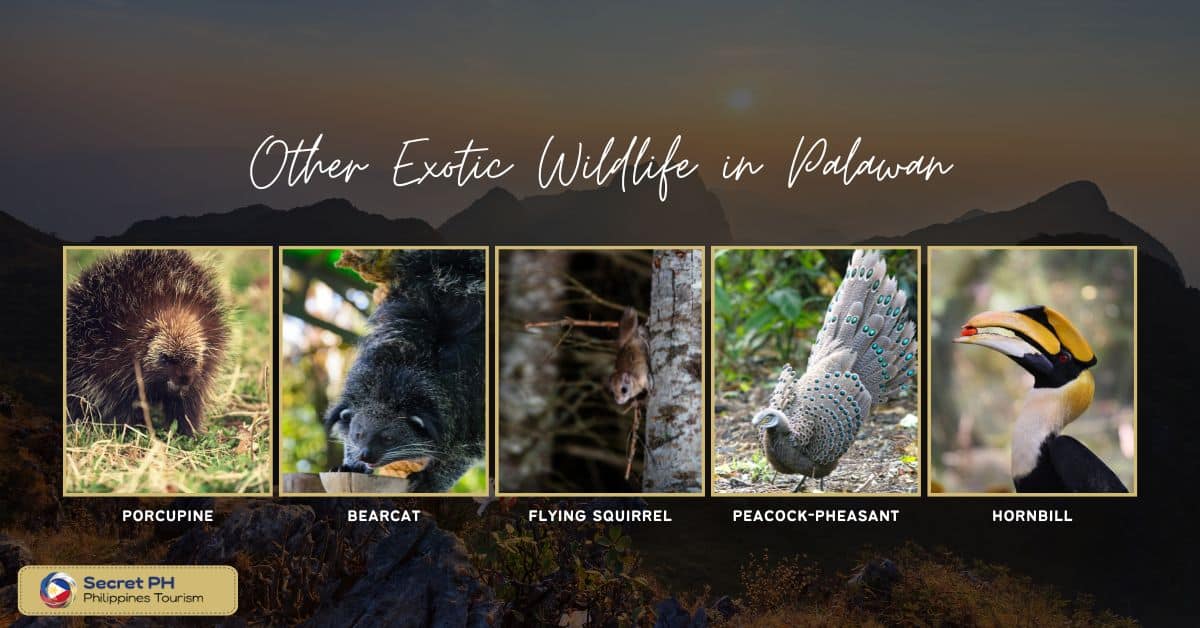The exotic wildlife of Palawan is a treasure trove of biodiversity, from the tiny but unique tarsier to the colorful and endangered Philippine cockatoo. These species, along with many others, call this Philippine island home and play an important role in its ecosystem. However, they face numerous threats and it is crucial that we take action to protect them.
In this blog post we take a closer look at what makes these remarkable species so special and why they need to be protected. We’ll explore their fascinating habitats, eating habits and more! Join us as come together to honor and appreciate these incredible species from Palawan’s unique ecosystem.

Importance of Preserving Palawan’s Wildlife
Palawan’s wildlife, as magnificent and untouched as it is, should be preserved for generations to come. Not only does it support the livelihoods of locals and tourists alike. It also helps restore the balance of nature by providing habitats for important species, maintaining clean air and water, among other things.
Safeguarding Palawan’s wildlife preserves the island’s unique cultural heritage that serves as home to special cultures not found anywhere else in the Philippines. Protecting Palawan’s prized creatures can be achieved through anti-poaching efforts, public awareness campaigns, and engaging with local communities on conservation practices.

The Tarsier: The Tiny but Unique Primate
The tarsier is a small, nocturnal primate, with a body length of about 9 to 16 cm and a tail that is nearly as long as its body. They have large, expressive eyes that are proportionally the largest of any mammal and are crucial to their hunting habits. Tarsiers have long, thin fingers with sharp claws that they use to grasp onto branches while they move through the trees.
Their legs are long and thin, and they have a unique ankle joint that allows them to rotate their feet 180 degrees, making it easier for them to cling onto branches and hunt for insects. They have soft, dense fur that is typically gray or brown in color, and they have large ears that are covered with hair. The tarsier’s physical characteristics are adapted to its arboreal, nocturnal lifestyle and make it a truly unique and fascinating species.
Tarsier habitat and behavior
Tarsiers are nocturnal animals, spending the majority of their day sleeping in trees and coming out at night to hunt. They feed primarily on insects such as crickets, beetles, and grasshoppers, which they capture using their sharp claws and long fingers. Tarsiers are solitary animals, with males and females coming together only to mate. They communicate using a variety of vocalizations, including high-pitched calls and ultrasonic vocalizations.
In terms of behavior, tarsiers are known for their unique method of hunting. They sit still on a branch and wait for prey to come within reach, then pounce on it with lightning-fast reflexes. They have a unique way of hunting that sets them apart from other primates and makes them a truly remarkable species.

Conservation status and efforts to protect the Tarsier
The conservation status of the Tarsier is an important topic of conversation. In many places, these small primates are considered endangered due to factors such as habitat destruction, illegal hunting and pet trade. To help protect them, efforts have been put in place to conserve their threatened habitats and create awareness about their conservation status.
This includes the establishment of protected areas for natural habitat preservation and community involvement in enforcing laws governing wildlife protection. Additionally, local communities are being encouraged to take responsibility for conserving Tarsier populations along with their unique habitats. Through research and active management, it is hoped that this species will be saved from extinction and slowly recover its population in an effort to ensure its survival.

The Philippine Cockatoo: A Colorful and Endangered Bird
The Philippine Cockatoo has a stocky body, with a length of approximately 40 cm and a wingspan of 60 cm. It is primarily white in color, with a yellow crest of feathers on its head that can be raised or lowered depending on the bird’s mood or state of excitement. The yellow crest is what gives the species its name and is one of its most distinctive features. The beak is large and hooked, and the feet and legs are black.
In terms of plumage, the Philippine Cockatoo has a dense, white feather covering, which helps to keep the bird warm in its forest habitat. The yellow crest is a bold contrast to the white body and makes the bird easily recognizable. The male and female are similar in appearance, but the female may have a slightly smaller crest.
Habitat and diet of the Philippine Cockatoo
The Philippine Cockatoo is one of the rare species of cockatoos living today and is endemic to the Philippines. They inhabit forests, primarily located on the islands of Luzon and Palawan, where they feed on various types of fruits, nuts, unripe grains, seeds, and buds. Due to habitat destruction caused by deforestation and other human activities, the population size of this species has been steadily decreasing and they are now listed as critically endangered.
Conservation efforts have included increasing habitat protection measures and creating special sanctuaries for them to live in. Regulation on their hunting and illegal trading are necessary in order to prevent further deterioration of their numbers.

Threats to the Philippine Cockatoo and conservation efforts
The Philippine Cockatoo or Cacatua Haematuropygia is a critically endangered species of cockatoos endemic to the Philippines. The primary threats this species faces are logging and illegal trade, which combined contribute to the destruction of their natural habitat. This has posed a major challenge for conservation, resulting in significantly reduced numbers over the past several decades, with some subpopulations now believed to be extinct.
Conservation efforts have been successful in protecting many areas of their habitat and reducing illegal activities. Various government organizations, such as the Department of Environment and Natural Resources, and private groups like Philippine Cockatoo Conservation Program (PCCP) continue to work with local community members on programs to increase habitat protection measures, support livelihoods through alternative income sources and help protect threatened birds from poaching attempts.

Other Exotic Wildlife in Palawan
Palawan is home to a wealth of exotic wildlife, from primates to birds to reptiles and more. Some of the other notable species found on the island include the Palawan porcupine, the Palawan bearcat, the Palawan flying squirrel, the Palawan peacock-pheasant, and the Palawan hornbill. Each of these species has its own unique adaptations and behaviors that make them well-suited to their environments and fascinating to observe.
Unique features of selected species
The Palawan porcupine is a species of porcupine that is native to Palawan and is known for its distinctive spiny coat, which helps to protect it from predators. The Palawan bearcat, also known as the binturong, is a species of civet that is known for its bear-like appearance and its distinctive, musky odor.
Flying squirrel is a species of flying squirrel that is known for its distinctive gliding ability, which allows it to move from tree to tree without ever touching the ground. The Palawan peacock-pheasant is a species of pheasant that is known for its stunning and colorful plumage, which is used in courtship displays.
Finally, the Palawan hornbill is a species of hornbill that is known for its distinctive, large bill and its loud, resonant calls. The bill is used to crack open hard-shelled fruits and nuts, and the calls are used to communicate with other members of the flock.

Threats to Palawan’s wildlife and efforts to protect them
The beautiful province of Palawan is home to many unique and endangered species. Unfortunately, these animals are increasingly under threat from habitat destruction and hunting. Conservationists are working tirelessly to protect the wildlife of Palawan, moderating fishing methods, replanting mangroves and reforesting certain areas.
Increased ecotourism has raised public awareness of the threats facing Palawan’s environment. It has generated funds for conservation projects. International organizations such as the World Wildlife Fund are providing additional research and funding to secure a safe future for their iconic species. Despite this effort, continued partnerships between authorities and local communities will be necessary to prevent unchecked deforestation and illegal hunting practices in Palawan.

In Conclusion
Palawan is home to a variety of exotic animals that draw people in from all over the world. The Tarsier and Philippine Cockatoo, both endemic to the region, are considered some of the most iconic species found.
Various other unique creatures inhabit the lands and waters of Palawan as well; primates, sea turtles and dolphins are just a few of the many species present there. Whether they come to observe or assist with conservation efforts, visitors can expect to find an abundance of wildlife on their travels.







